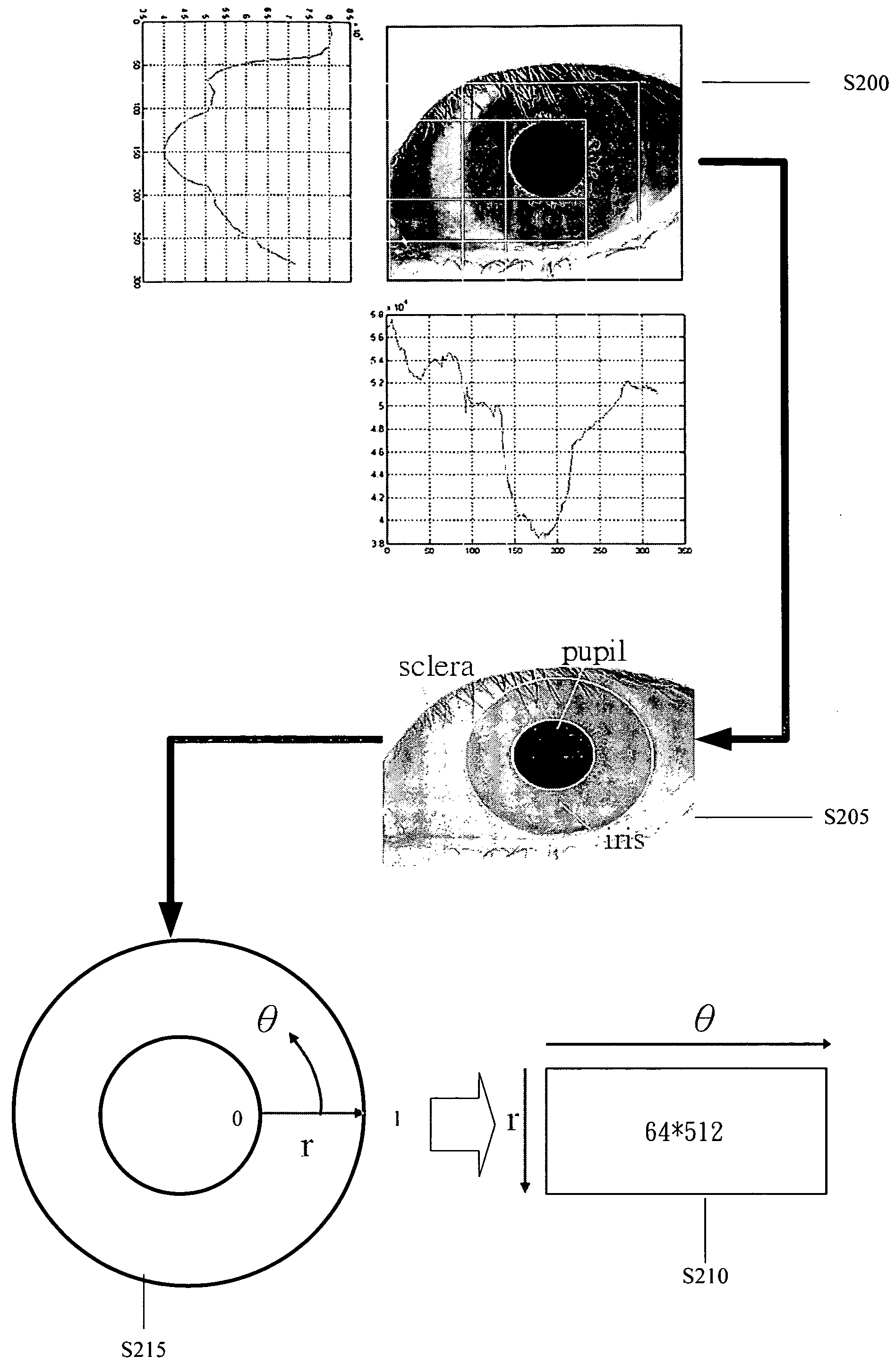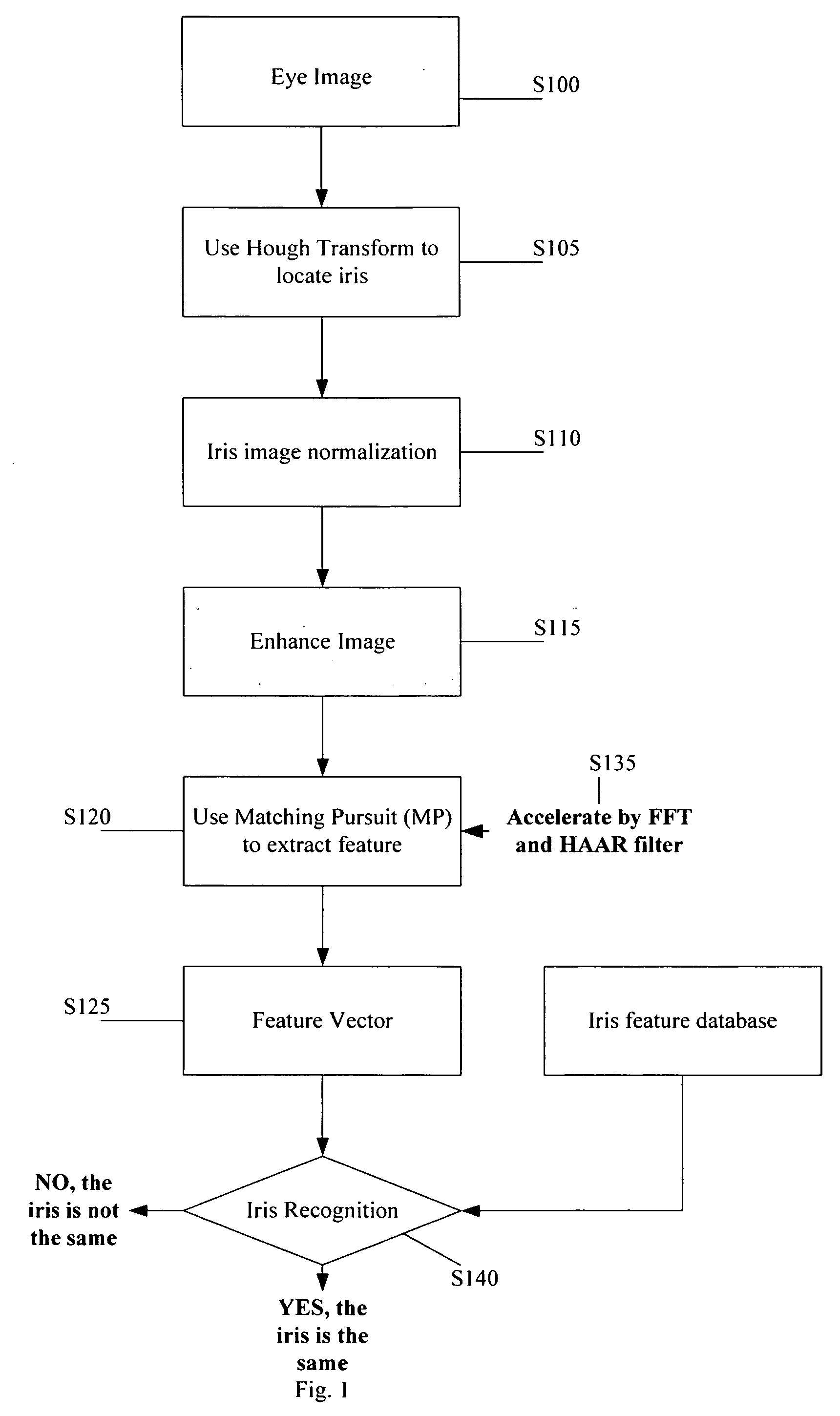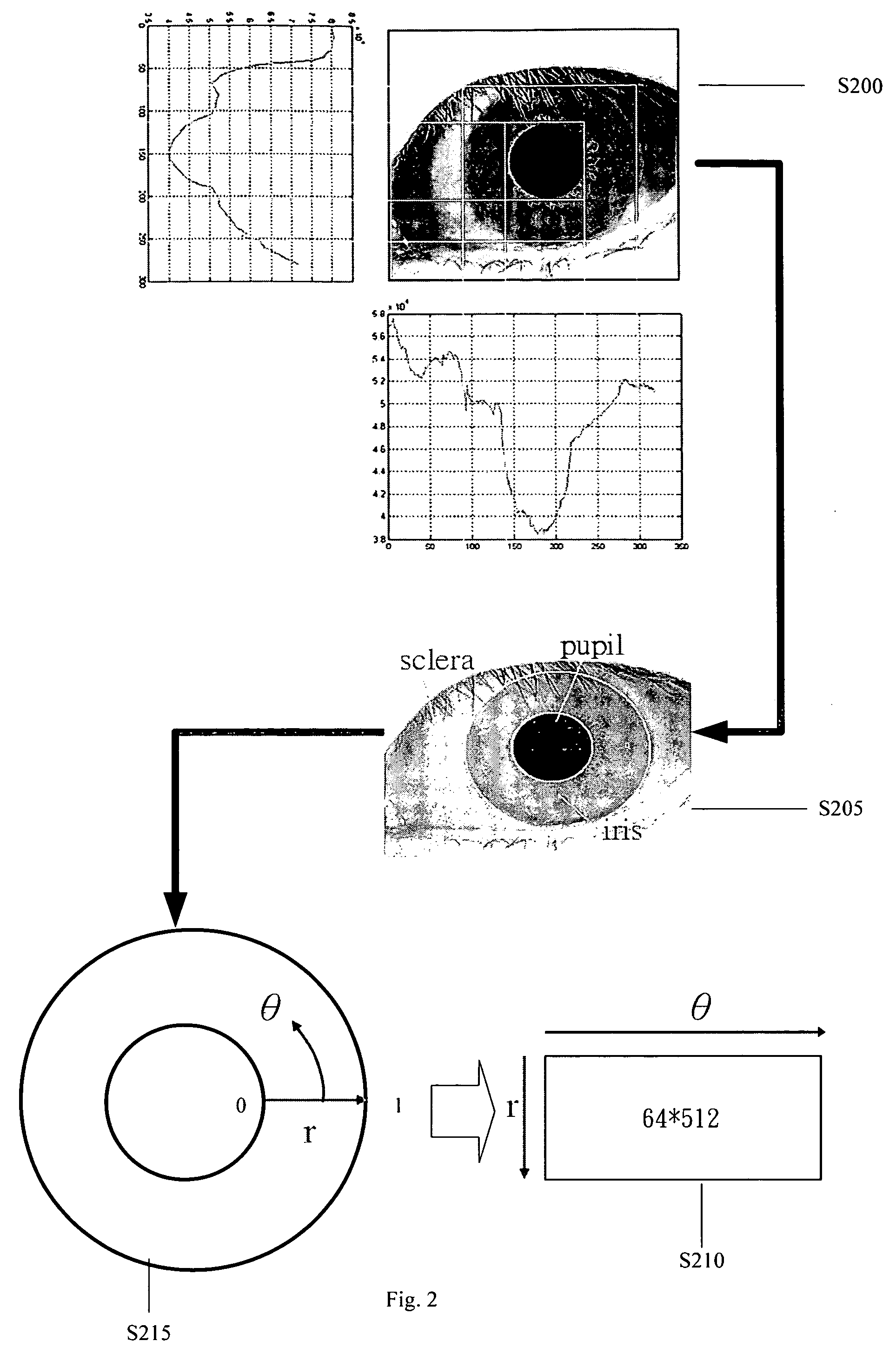Iris recognition method
a recognition method and iris technology, applied in the field of iris recognition methods, can solve the problems of inability to determine whether the person is real or not, the loss of tools, and the inability of traditional identification mechanisms to determine the person, etc., to achieve the effect of reducing the memory space occupied by each piece, reducing the difficulty of extraction and reconstruction, and reducing the difficulty of recognition accuracy
- Summary
- Abstract
- Description
- Claims
- Application Information
AI Technical Summary
Benefits of technology
Problems solved by technology
Method used
Image
Examples
Embodiment Construction
[0014]The present invention pertains to an iris recognition method, which utilizes a matching pursuit algorithm to simplify the extraction and reconstruction of iris features and reduce the memory space occupied by each piece of iris data without the penalty of recognition accuracy.
[0015]Refer to FIG. 1 a block diagram showing the flowchart of the method of the present invention. In Step S100, an image containing the iris is obtained. Next, in Step S105, the iris region is located, and the located iris region is expanded into a rectangular image. Refer to FIG. 2 a diagram schematically showing that the iris region is located via the Hough Transform. In Step S200 shown in FIG. 2, based on the characteristic that the iris is paler than the pupil and darker than the sclera, a color discrimination method is used to locate the boundary between the iris and the pupil and the boundary between the iris and the sclera as shown in Step S205, and the centers and radii and the pupil and the iri...
PUM
 Login to View More
Login to View More Abstract
Description
Claims
Application Information
 Login to View More
Login to View More - R&D
- Intellectual Property
- Life Sciences
- Materials
- Tech Scout
- Unparalleled Data Quality
- Higher Quality Content
- 60% Fewer Hallucinations
Browse by: Latest US Patents, China's latest patents, Technical Efficacy Thesaurus, Application Domain, Technology Topic, Popular Technical Reports.
© 2025 PatSnap. All rights reserved.Legal|Privacy policy|Modern Slavery Act Transparency Statement|Sitemap|About US| Contact US: help@patsnap.com



